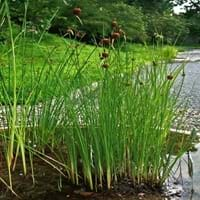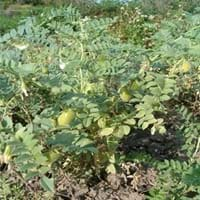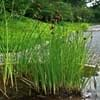Life Span
Perennial
Annual
Origin
Eastern Europe, Western Asia
Mediterranean, Turkey, Africa, Southern Asia, Western Asia
Types
Common Cattail, Southern Cattail, Dwarf Bulrush
3
Number of Varieties
Not Available
Habitat
Lake margins, Ponds, Swamps
Subtropical climates, Temperate Regions, Tropical regions
USDA Hardiness Zone
3-11
Not Available
AHS Heat Zone
12-1
Not Available
Sunset Zone
21,22
Not Available
Habit
Upright/Erect
Cushion/Mound-forming
Flower Color
Yellow, Green, Brown, Chocolate
White, Pink, Lavender
Flower Color Modifier
Not Available
Bicolor
Fruit Color
Light brown, Light Red
Yellow, Green, Bronze, Tan, Brown
Leaf Color in Spring
Green, Dark Green
Green
Leaf Color in Summer
Green, Dark Green
Green, Sea Green, Gray Green
Leaf Color in Fall
Green, Dark Green
Green, Sea Green, Gray Green
Leaf Color in Winter
Brown
Green, Sea Green, Gray Green
Leaf Shape
Long linear and narrow
Small oblong
Plant Season
Summer, Fall, Winter
Spring, Summer, Fall, Winter
Sunlight
Full Sun, Partial Sun
Full Sun, Partial Sun
Type of Soil
Clay, Loam, Sand
Loam, Sand
The pH of Soil
Acidic, Neutral
Acidic, Neutral
Soil Drainage
Poorly Drained
Well drained
Bloom Time
Summer, Late Summer, Early Fall
Early Spring, Spring, Late Spring, Early Summer, Summer, Late Summer, Early Fall, Fall, Late Fall, Early Winter, Winter, Late Winter
Tolerances
Wet Site
Drought, Frost
Where to Plant?
Container, In Water
Container, Ground
How to Plant?
Runners
Seedlings, Transplanting
Plant Maintenance
Low
Medium
Watering Requirements
Plant grows in water
Average Water Needs, Medium, Requires a lot of watering, Requires watering in the growing season
In Summer
Aquatic Plant
Lots of watering
In Spring
Aquatic Plant
Moderate
In Winter
Aquatic Plant
Average Water
Soil pH
Acidic, Neutral
Acidic, Neutral
Soil Type
Clay, Loam, Sand
Loam, Sand
Soil Drainage Capacity
Poorly Drained
Well drained
Sun Exposure
Full Sun, Partial Sun
Full Sun, Partial Sun
Pruning
Prune in early spring, Remove damaged leaves, Remove dead branches, Remove dead leaves
Remove damaged leaves, Remove dead branches, Remove dead leaves
Fertilizers
Nitrogen, Phosphate
Compost
Pests and Diseases
Red blotch
Red blotch
Plant Tolerance
Drought
Drought
Flower Petal Number
Single
Single
Foliage Texture
Medium
Medium
Foliage Sheen
Matte
Matte
Attracts
Birds, Flying insects
Insects
Allergy
Not Available
Constipation, Legume allergy
Aesthetic Uses
Beautification, Showy Purposes, Water gardening
Not Available
Beauty Benefits
Not Available
Not Available
Environmental Uses
Food for animals, Food for birds, Food for insects, Nesting sites for birds
Air purification, Food for animals
Medicinal Uses
Nutrients
constipation, High cholestrol, Kidney problems, Nutrients
Part of Plant Used
Leaves
Seeds
Other Uses
Decoration Purposes, Showy Purposes, Used as Ornamental plant
Economic Purpose, Employed in herbal medicine, Used As Food
Used As Indoor Plant
Yes
No
Used As Outdoor Plant
Yes
Yes
Garden Design
Bog Garden, Container, Water Gardens
Edible, Herb / Vegetable
Botanical Name
TYPHA minima
CICER arietinum
Common Name
Dwarf Cattail
Bengal Gram, Chickpea , Garbanzo Bean, Indian Pea
In German
Dwarf Rohrkolben
Kichererbse
In French
Cattail nain
Pois chiche
In Spanish
Espadaña enano
Garbanzo
In Greek
Νάνος Cattail
Ρεβίθι
In Portuguese
Tifa Dwarf
grão de bico
In Polish
Dwarf Ożypałka
Groch włoski
In Latin
Pumilio Cattail
CICER
Phylum
Tracheophyta
Spermatophyta
Class
Liliopsida
Magnoliopsida
Family
Typhaceae
Fabaceae
Clade
Angiosperms, Commelinids, Monocots
Angiosperms, Eudicots, Rosids
Tribe
Not Available
Viceae Alef
Subfamily
Not Available
Papilionoideae
Number of Species
Not Available
Importance of Dwarf Cattail and Chickpea
Want to have the most appropriate plant for your garden? You might want to know the importance of Dwarf Cattail and Chickpea. Basically, these two plants vary in many aspects. Compare Dwarf Cattail and Chickpea as they differ in many characteristics such as their life, care, benefits, facts, etc. Every gardener must at least have the slightest clue about the plants he wants to plant in his garden. Compare their benefits, which differ in many ways like facts and uses. The medicinal use of Dwarf Cattail is Nutrients whereas of Chickpea is constipation, High cholestrol, Kidney problems and Nutrients. Dwarf Cattail has beauty benefits as follows: Not Available while Chickpea has beauty benefits as follows: Not Available.
Compare Facts of Dwarf Cattail vs Chickpea
How to choose the best garden plant for your garden depending upon its facts? Here garden plant comparison will help you to solve this query. Compare the facts of Dwarf Cattail vs Chickpea and know which one to choose. As garden plants have benefits and other uses, allergy is also a major drawback of plants for some people. Allergic reactions of Dwarf Cattail are Not Available whereas of Chickpea have Constipation and Legume allergy respectively. Having a fruit bearing plant in your garden can be a plus point of your garden. Dwarf Cattail has no showy fruits and Chickpea has showy fruits. Also Dwarf Cattail is not flowering and Chickpea is not flowering . You can compare Dwarf Cattail and Chickpea facts and facts of other plants too.





